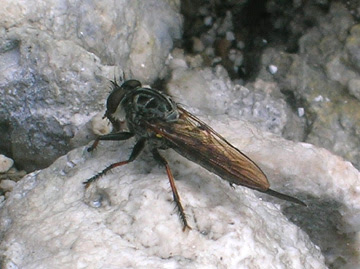Swamp Metalmarks and the ESA

Over at Rural Wat, valown has written a series of posts about the Endangered Species Act (ESA). These, and some of the discussion that he and I have had in the comments have prompted me to offer a few of my own thoughts here.
I have been working on restoration of the swamp metalmark butterfly in Illinois for about five years now. This sepcies is neither an endangered species at the federal level, nor a candidate for listing. Should the situation be otherwise? Part of what prompted me to ask this question is some of the language of the ESA as recounted by valown:
(6) The term "endangered species" means any species which is in danger of extinction throughout all or a significant portion of its range...Let's consider this statement in light of the range of this butterfly

In the states shaded in red, NatureServe has ranked the swamp metalmark as critically imperiled (S1). In the orange states they have ranked it as imperiled (S2). In Iowa, it is listed as historic only (SH - meaning it's now extinct there) . In Missouri, it is listed as vulnerable to exterpation or extinction (S3). Globally, it is also listed as vulnerable (G3). Its global status seems closely tied to it's status in Missouri.
This information alone suggests that this butterfly might qualify as a candidate for the ESA. The states in which it is considered imperiled, critically or otherwise, make up the vast majority of its range. NatureServe's description of this species reads, in part:
There are possibly around 100 occurrences, although substantially fewer have ever been documented and some of these no longer exist. This species exists as mostly isolated, small, remnant colonies with little or no potential for recolonization in most of its range. It is thus expected a lot of occurrences will prove to be non-viable. Outside of the Ozarks, the species has a limited and highly fragmented range with low habitat occupancy. This species is almost certainly extirpated or imperiled to critically imperiled (S1 or S2) in all states except for its core range in Missouri and possibly immediately adjacent parts of Arkansas. A recent reassessment of its status in Missouri concludes S3 is still an appropriate rank there with scattered localized populations in up to 20 counties.A couple of years back, I received a spreadsheet of the locations for this species in Missouri. Consistent with the NatureServe report, there are 33 locations on the list, and indeed these sites include 20 counties. Of those 33 locations, 13 of the records date from before 1970 (one dates to 1927). Twenty one of the records date from before 1980, and only three of the records are from 1990 or later.
I don't know how much verification of these sites has been done in the intervening years since I received the spreadsheet, but I do know that this is a species with a known history of populations blinking out well within the timeframe covered by the spreadsheet.
My point here is not to imply that anything nefarious is going on here. I do, however, think that the conservation status of this species bears a closer look. At the very least, a serious on the ground assessment of its current status in Missouri would seem to be called for.

Labels: Butterflies, Conservation, Endangered Species, Swamp Metalmark



















_Det_Chemsak_Dominica_UCB.jpg)




